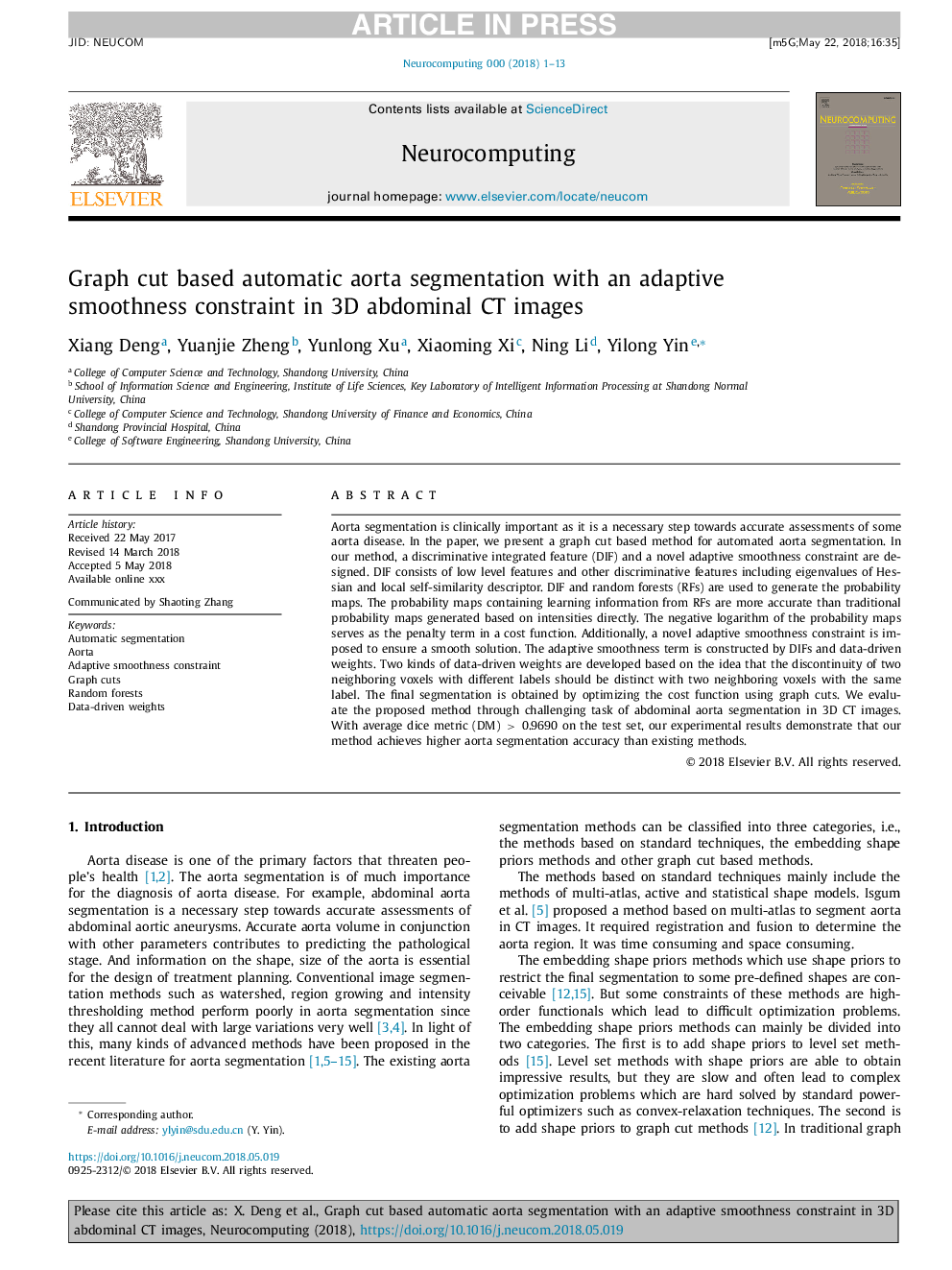| Article ID | Journal | Published Year | Pages | File Type |
|---|---|---|---|---|
| 6863618 | Neurocomputing | 2018 | 13 Pages |
Abstract
Aorta segmentation is clinically important as it is a necessary step towards accurate assessments of some aorta disease. In the paper, we present a graph cut based method for automated aorta segmentation. In our method, a discriminative integrated feature (DIF) and a novel adaptive smoothness constraint are designed. DIF consists of low level features and other discriminative features including eigenvalues of Hessian and local self-similarity descriptor. DIF and random forests (RFs) are used to generate the probability maps. The probability maps containing learning information from RFs are more accurate than traditional probability maps generated based on intensities directly. The negative logarithm of the probability maps serves as the penalty term in a cost function. Additionally, a novel adaptive smoothness constraint is imposed to ensure a smooth solution. The adaptive smoothness term is constructed by DIFs and data-driven weights. Two kinds of data-driven weights are developed based on the idea that the discontinuity of two neighboring voxels with different labels should be distinct with two neighboring voxels with the same label. The final segmentation is obtained by optimizing the cost function using graph cuts. We evaluate the proposed method through challenging task of abdominal aorta segmentation in 3D CT images. With average dice metric (DM) â¯>⯠0.9690 on the test set, our experimental results demonstrate that our method achieves higher aorta segmentation accuracy than existing methods.
Related Topics
Physical Sciences and Engineering
Computer Science
Artificial Intelligence
Authors
Xiang Deng, Yuanjie Zheng, Yunlong Xu, Xiaoming Xi, Ning Li, Yilong Yin,
